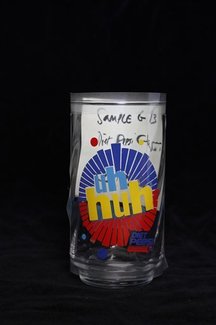
© Kentucky.com
Los Angeles -- Drinking glasses depicting comic book and movie characters such as
Superman, Wonder Woman and the Tin Man from
The Wizard of Oz exceed federal limits for lead in children's products by up to 1,000 times, according to laboratory testing commissioned by The Associated Press.
The decorative enamel on the superhero and Oz sets - made in China and purchased at a Warner Brothers Studios store in Burbank - contained between 16 percent and 30.2 percent lead. The federal limit on children's products is 0.03 percent.
The same glasses also contained relatively high levels of the even-more-dangerous cadmium, though there are no federal limits on that toxic metal in design surfaces.
In separate testing to recreate regular handling, other glasses shed small but notable amounts of lead or cadmium from their decorations. Federal regulators have worried that toxic metals rubbing onto children's hands can get into their mouths. Among the brands on those glasses: Coca-Cola, Walt Disney, Burger King and McDonald's.
Coca-Cola, which had been given AP's test results last week, announced Sunday evening that after retesting it was voluntarily recalling 88,000 glasses.
The AP testing was part of the news organization's ongoing investigation into dangerous metals in children's products and was conducted in response to a recall by McDonald's of 12 million glasses this summer because cadmium escaped from designs depicting four characters in the latest
Shrek movie.
The New Jersey manufacturer of those glasses said in June that the products were made according to standard industry practices, which includes the routine use of cadmium to create red and similar colors.
To assess potential problems with glass collectibles beyond the
Shrek set, AP bought and analyzed new glasses off the shelf, and old ones from online auctions, thrift shops and a flea market. The buys were random.
The fact it was so easy to find glasses that appeal to kids and appear to violate the federal lead law suggests that contamination in glassware is wider than one McDonald's promotion.
The irony of the latest findings is that AP's original investigation in January revealed that some Chinese manufacturers were substituting cadmium for banned lead in children's jewelry; that finding eventually led to the McDonald's-Shrek recall; now, because of the new testing primarily for cadmium in other glassware, lead is back in the spotlight as well.
AP's testing, conducted by ToyTestingLab of Rhode Island, found that the enamel used to color the Tin Man had the highest lead levels, at 1,006 times the federal limit for children's products. Every Oz and superhero glass tested exceeded the government limit: The Lion by 827 times and Dorothy by 770 times; Wonder Woman by 533 times, Superman by 617 times, Batman by 750 times and the Green Lantern by 677 times.
Federal regulators will decide whether the superhero and Oz glasses are "children's products" and thus subject to strict lead limits; if U.S. Consumer Product Safety Commission staffers conclude the glasses to fall outside that definition, the lead levels would be legal.
Judging by the agency's own analysis, obtained by the AP under the Freedom of Information Act, the Oz and superhero glasses appeal to kids.
"Licensed characters based on action superhero themes or friendship themes are very popular" with children ages 6 to 8, CPSC staff wrote when explaining why the
Shrek glasses, which featured the cartoon ogre and his friends, would end up in children's hands.
Warner Brothers said, "It is generally understood that the primary consumer for these products is an adult, usually a collector."
However, on Warner Brothers' website, the superhero glasses are sold alongside kids' T-shirts with similar images and a school lunch box. An
online retailer, describes the 10-ounce glasses as "a perfect way to serve cold drinks to your children or guests."
The importer, Utah-based Vandor LLC, said it "markets its products to adult collectors." The company said less than 10,000 of each set had been sold and that the products were made under contract in China.
from the body. Citrus pectin rids the body of mercury, lead, and cadmium.
[Link]